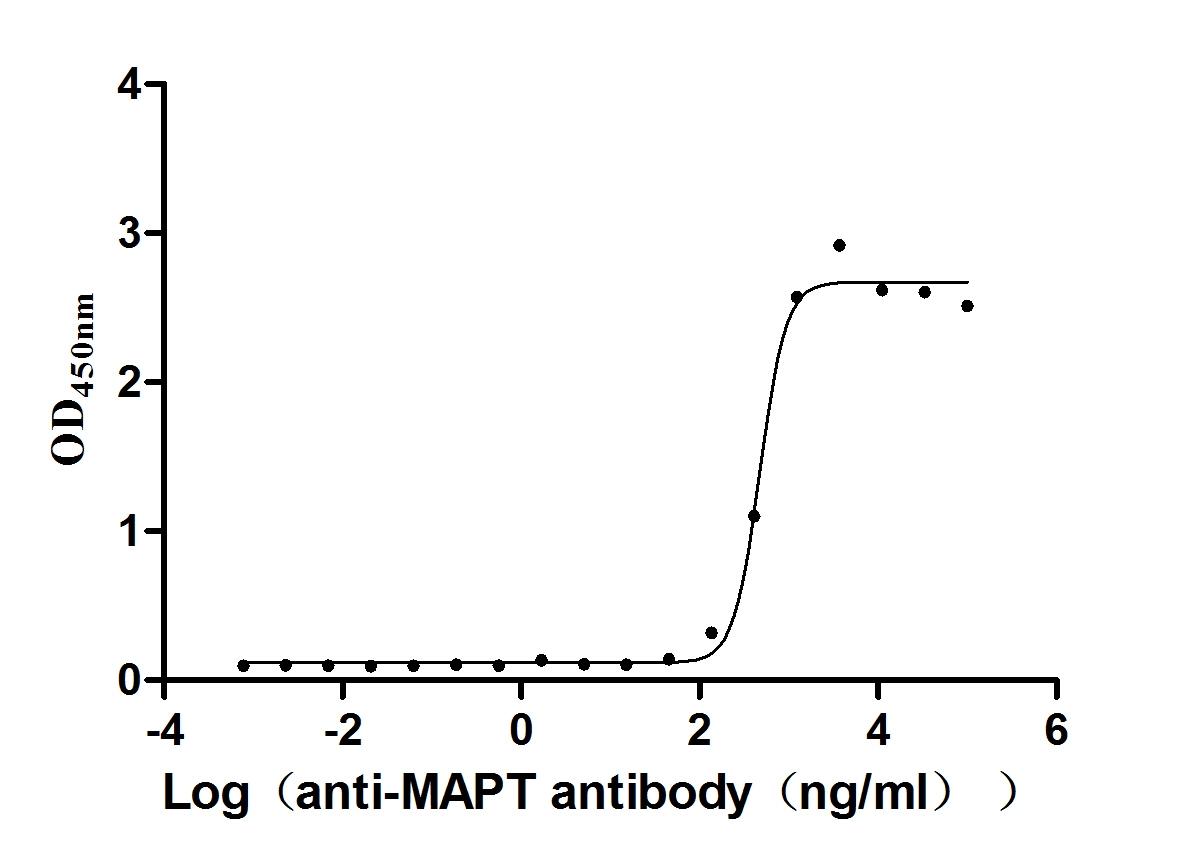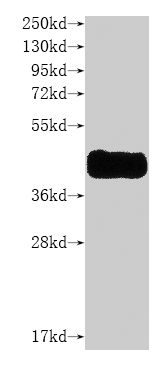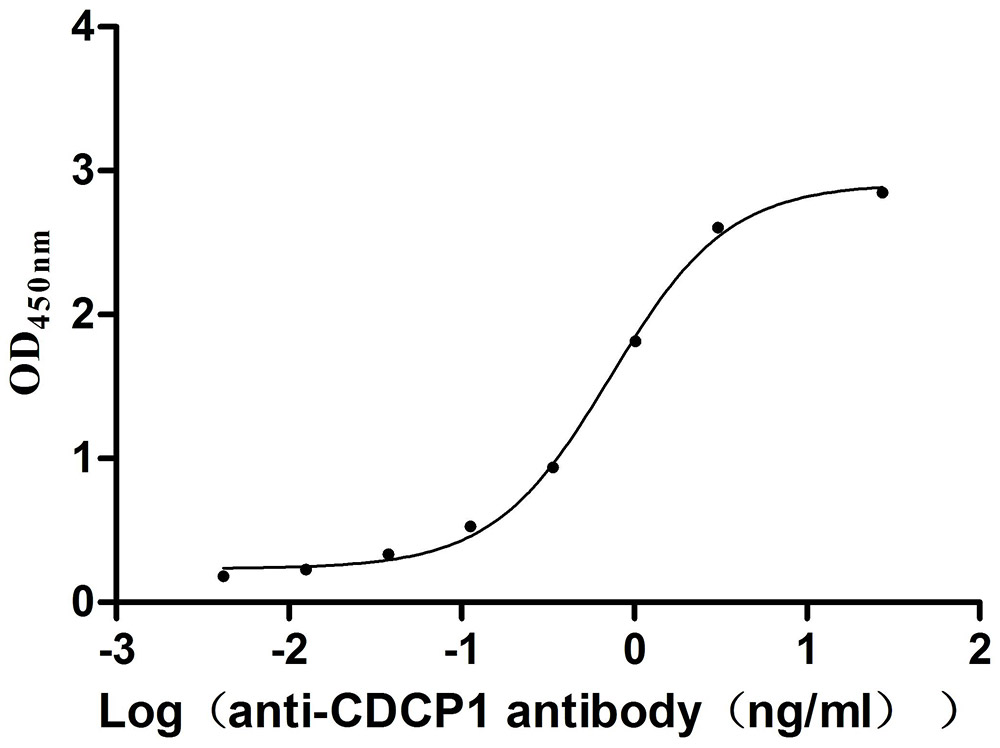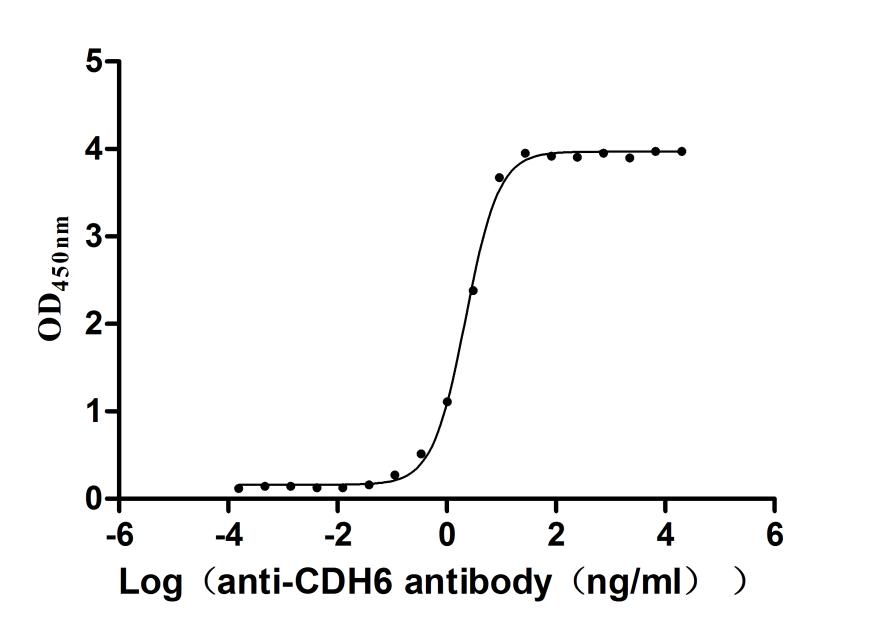Recombinant Arabidopsis thaliana Cryptochrome-2 (CRY2), partial
-
中文名稱:Recombinant Arabidopsis thaliana Cryptochrome-2(CRY2) ,partial
-
貨號:CSB-YP856870DOA
-
規(guī)格:
-
來源:Yeast
-
其他:
-
中文名稱:Recombinant Arabidopsis thaliana Cryptochrome-2(CRY2) ,partial
-
貨號:CSB-EP856870DOA
-
規(guī)格:
-
來源:E.coli
-
其他:
-
中文名稱:Recombinant Arabidopsis thaliana Cryptochrome-2(CRY2) ,partial
-
貨號:CSB-EP856870DOA-B
-
規(guī)格:
-
來源:E.coli
-
共軛:Avi-tag Biotinylated
E. coli biotin ligase (BirA) is highly specific in covalently attaching biotin to the 15 amino acid AviTag peptide. This recombinant protein was biotinylated in vivo by AviTag-BirA technology, which method is BriA catalyzes amide linkage between the biotin and the specific lysine of the AviTag.
-
其他:
-
中文名稱:Recombinant Arabidopsis thaliana Cryptochrome-2(CRY2) ,partial
-
貨號:CSB-BP856870DOA
-
規(guī)格:
-
來源:Baculovirus
-
其他:
-
中文名稱:Recombinant Arabidopsis thaliana Cryptochrome-2(CRY2) ,partial
-
貨號:CSB-MP856870DOA
-
規(guī)格:
-
來源:Mammalian cell
-
其他:
產(chǎn)品詳情
-
純度:>85% (SDS-PAGE)
-
基因名:CRY2
-
Uniprot No.:
-
別名:CRY2; PHH1; SEL20; At1g04400; F19P19.14Cryptochrome-2; Atcry2; Blue light photoreceptor; Protein PHR homolog 1; AtPHH1; Protein SUPPRESSOR OF elf3 20
-
種屬:Arabidopsis thaliana (Mouse-ear cress)
-
蛋白長度:Partial
-
蛋白標簽:Tag?type?will?be?determined?during?the?manufacturing?process.
The tag type will be determined during production process. If you have specified tag type, please tell us and we will develop the specified tag preferentially. -
產(chǎn)品提供形式:Lyophilized powder
Note: We will preferentially ship the format that we have in stock, however, if you have any special requirement for the format, please remark your requirement when placing the order, we will prepare according to your demand. -
復(fù)溶:We recommend that this vial be briefly centrifuged prior to opening to bring the contents to the bottom. Please reconstitute protein in deionized sterile water to a concentration of 0.1-1.0 mg/mL.We recommend to add 5-50% of glycerol (final concentration) and aliquot for long-term storage at -20℃/-80℃. Our default final concentration of glycerol is 50%. Customers could use it as reference.
-
儲存條件:Store at -20°C/-80°C upon receipt, aliquoting is necessary for mutiple use. Avoid repeated freeze-thaw cycles.
-
保質(zhì)期:The shelf life is related to many factors, storage state, buffer ingredients, storage temperature and the stability of the protein itself.
Generally, the shelf life of liquid form is 6 months at -20°C/-80°C. The shelf life of lyophilized form is 12 months at -20°C/-80°C. -
貨期:Delivery time may differ from different purchasing way or location, please kindly consult your local distributors for specific delivery time.Note: All of our proteins are default shipped with normal blue ice packs, if you request to ship with dry ice, please communicate with us in advance and extra fees will be charged.
-
注意事項:Repeated freezing and thawing is not recommended. Store working aliquots at 4°C for up to one week.
-
Datasheet :Please contact us to get it.
靶點詳情
-
功能:Photoreceptor that mediates primarily blue light inhibition of hypocotyl elongation and photoperiodic control of floral initiation, and regulates other light responses, including circadian rhythms, tropic growth, stomata opening, guard cell development, root development, bacterial and viral pathogen responses, abiotic stress responses, cell cycles, programmed cell death, apical dominance, fruit and ovule development, seed dormancy, and magnetoreception. Photoexcited cryptochromes interact with signaling partner proteins to alter gene expression at both transcriptional and post-translational levels and, consequently, regulate the corresponding metabolic and developmental programs. Blue-light absorbing flavoprotein that activates reversible flavin photoreduction via an electron transport chain comprising a tryptophan triad (W-321, W-374 and W-397), or via an alternative electron transport that involves small metabolites, including NADPH, NADH, and ATP. The half-life of the activated signaling state is about 16 minutes. Perceives low blue light (LBL) and responds by directly contacting two bHLH transcription factors, PIF4 and PIF5, at chromatin on E-box variant 5'-CA[CT]GTG-3' to promote their activity and stimulate specific gene expression to adapt global physiology (e.g. hypocotyl elongation and hyponastic growth in low blue light). In response to blue light, binds to CIB proteins (e.g. BHLH63/CIB1 and BHLH76/CIB5) to activates transcription and floral initiation. Mediates blue light-induced gene expression, floral initiation and hypocotyl elongation through the interaction with SPA1 that prevents formation of SPA1/COP1 complex but stimulates COP1 binding, and thus inhibits COP1-mediated degradation of transcription factors (e.g. CO and HY5). Promotes flowering time in continuous light (LL). Involved in shortening the circadian clock period, especially at 27 degrees Celsius, in blue light (BL). Required to maintain clock genes expression rhythm. Triggers nuclear accumulation of ROS in response to blue light illumination. Involved in blue light-dependent stomatal opening, transpiration and inhibition of stem and root growth, probably by regulating abscisic acid (ABA). Regulates the timing of flowering by promoting the expression of 'FLOWERING LOCUS T' (FT) in vascular bundles. Negatively regulated by 'FLOWERING LOCUS C' (FLC). General positive regulator of reversible low light-induced chromatin decompaction. Involved in triggering chromatin decondensation during floral transition. Together with phototropins, involved in phototropism regulation by various blue light fluence; blue light attenuates phototropism in high fluence rates (100 umol.m-2.s-1) but enhances phototropism in low fluence rates (<1.0 umol.m-2.s-1). The effect of near-null magnetic field on flowering is altered by changes of blue light cycle and intensity in a CRY1/CRY2-dependent manner. Involved in the strigolactone signaling that regulates hypocotyl growth in response to blue light.; Confers resistance to turnip crinkle virus (TCV) by preventing COP1-mediated proteasome-mediated degradation of RPP8/HRT, thus promoting its stability in light. Exposure to darkness or blue-light induces degradation of CRY2, and in turn of RPP8/HRT, resulting in susceptibility to TCV.
-
基因功能參考文獻:
- Molecular basis for blue light-dependent phosphorylation of Arabidopsis CRY2 has been described. PMID: 28492234
- the blue light-dependent CRY2 degradation is significantly impaired in the temperature-sensitive cul1 mutant allele (axr6-3), especially under the non-permissive temperature. PMID: 27516416
- Arabidopsis thaliana cry2 proteins containing Trp triad mutations indeed undergo robust photoreduction in living cultured insect cells. PMID: 25428980
- data showed that mutations in the serine residues within and outside the serine cluster diminished blue light-dependent CRY2 phosphorylation, degradation, and physiological activities. PMID: 25792146
- Our study demonstrates that CIBs function redundantly in regulating CRY2-dependent flowering, and that different CIBs form heterodimers to interact with the non-canonical E-box DNA in vivo. PMID: 24130508
- fusing AtCRY2 to the TopBP1 DNA damage checkpoint protein, light-induced AtCRY2 PBs can be used to activate DNA damage signaling pathway in the absence of DNA damage PMID: 23833191
- Degradation of Arabidopsis CRY2 is regulated by SPA1, Spa2, Spa4 proteins and phytochrome A. PMID: 22739826
- The photoexcited cryptochromes form oligomers, preceding other biochemical changes of CRY2, facilitate photobody formation, signal amplification, and propagation, as well as desensitization by degradation. PMID: 22311776
- Leaf epidermal peels of Arabidopsis mutants lacking cryptochromes 1 and 2 exposed to a background of red light show severely impaired stomatal opening responses to blue light. PMID: 22147516
- cryptochromes mediate blue-light responses via a photochemistry distinct from trp-triad-dependent photoreduction PMID: 22139370
- cry2 mutants exhibit reduced changes of mRNA expression in response to not only blue light, but also red light. PMID: 20031923
- In the regulation of flowering, CRY2 regulates Flowering Locus T (FT) expression in a cell-autonomous manner. PMID: 17259260
- In response to blue light, the C-terminal tail of CRY2 is phosphorylated and electrostatically repelled from the surface of the PHR domain to form an "open" conformation, resulting in derepression of the NC80 motif. PMID: 17438275
- Data showed that CRY2 is ubiquitinated in response to blue light and that ubiquitinated CRY2 is degraded by the 26S proteasome in the nucleus. PMID: 17965271
- identification & characterization of the CIB1 (cryptochrome-interacting basic-helix-loop-helix) protein; CIB1 interacts with CRY2 in a blue light-specific manner & it acts with additional CIB1-related proteins to promote CRY2-dependent floral initiation PMID: 18988809
- CRY2 formed nuclear bodies in the presence of the 26S-proteasome inhibitors that block blue light-dependent CRY2 degradation. PMID: 19141709
顯示更多
收起更多
-
亞細胞定位:Nucleus. Nucleus, PML body. Cytoplasm.
-
蛋白家族:DNA photolyase class-1 family
-
組織特異性:Mostly expressed in the shoot meristems and root tips, and, to a lower extent, in the cotyledons, hypocotyls, and roots.
-
數(shù)據(jù)庫鏈接:
Most popular with customers
-
Recombinant Mouse Microtubule-associated protein tau (Mapt) (Active)
Express system: Mammalian cell
Species: Mus musculus (Mouse)
-
Recombinant Human C-C chemokine receptor type 8 (CCR8)-VLPs (Active)
Express system: Mammalian cell
Species: Homo sapiens (Human)
-
Recombinant Mouse CUB domain-containing protein 1 (Cdcp1), partial (Active)
Express system: Mammalian cell
Species: Mus musculus (Mouse)
-
Recombinant Human Carcinoembryonic antigen-related cell adhesion molecule 8(CEACAM8) (Active)
Express system: Mammalian cell
Species: Homo sapiens (Human)
-
Recombinant Macaca fascicularis Cadherin 6(CDH6),partial (Active)
Express system: Mammalian cell
Species: Macaca fascicularis (Crab-eating macaque) (Cynomolgus monkey)
















